What is the difference between an inquiry and quotation ?
Inquiry: Request made to a vendor for a quotation for required materials or services. No availability check is done for inquiry.
Quotation: Offer from a vendor to a purchasing organization regarding the supply of materials or performance of services subject to predefined terms and conditions. A quotation consists of a number of items, in which the total quantity and delivery date of an offered material or service are specified. The total quantity can be subdivided into several partial quantities with different delivery dates in the lines of a delivery schedule.
Do you always have to have a material master record number when you enter an item on a sales document (inquiry and quote)? If not what would you have to use to be able to enter information at item level?
No. Customer Material Information or Material Description.
If a customer doesn’t place an order with you after you have sent him a quotation, what happens to the quotation document?
Remains active till the end of validity period.
Can you have alternative items in a sales order?
Yes.
If you reference an inquiry when creating a quotation ,would the inquiry be updated?
Yes.
Can you copy one inquiry to many quotations ?
No.
Can you copy several previous documents into one sales order?
Yes.
Do you always have to copy the entire quantities at item level when you reference a previous document?
No.
Can you make sure that business data in a sales order is only possible to maintain at header level?
Yes.
From where is the delivering plant transferred into the sales order?
Customer Master, Material Master.
Which partner function is relevant for the delivering plant? The sold-to-party , bill-to-party, payer, carrier or the ship- to- party?
Ship-to party.
Can you manually change the delivering plant in the sales order once it was defaulted from the master data?
Yes.
For what or why do you use the incompletion log?
To have a complete document so that it doesn’t affect subsequent processes.
Can you have different incompletion logs for different item categories? Schedule line categories?
Yes.
If a document is incomplete can you still save the document?
Yes.
Which reference statuses can a document have at item level? Which statuses at header level?
Item level: Partial, Full.
Header level: Full.
What’s the advantage of using text as a reference instead of duplicating it?
Can be modified if needed.
What three sources provide data for the creation of a sales document?
Material Master, Customer Master, Previous referenced documents.
Can you change addresses of partners manually in the sales document?
Yes.
Name several input tools that make order entry faster and give a definition of them?
Customer Material Information, Product Proposal , Referencing Documents.
In which business environment would you use only the single-line entry screen to create and save the order?
Telephone Sales, Simple Business.
If you do not specify the delivering plant in the sales order, what could the system then not do?
Delivery Scheduling.
For what would you use the fast change function in sales entry?
Alternate Plants, Delivery or Billing Blocks
Name two ways to control that customers can receive only certain materials?
Material Listing, Exclusion.
What does the item category control?
General Data
- Should pricing be carried out for the item?
- When should an item be regarded as completed? A quotation item, for example, can only be regarded as completed if the entire quantity has been copied into a sales order.
- Is it an item that refers to a material or is it a text item?
- Are schedule lines allowed for the item?
- May general business data, for example, the terms of payment at the item level, deviate from those at the header level?
- Should a system message appear if the item cannot be fully delivered?
- Which fields are relevant for the incompletion log?
- Which partner functions are allowed at the item level and which are mandatory?
- Which output (for example, an order confirmation) is allowed for the business transaction and which output determination procedure is used?
Shipping Data
- Is an item relevant for delivery?
- Should the weight and the volume of an item be determined?
Billing Data
- Is an item relevant for billing?
- Should the cost of the item be determined?
- Is it a statistical item? Pricing is carried out for statistical items. However, they are not added to the value of the order, that is, the customer is not charged for them.
- Should a billing block be set automatically for an item? For example, this may be important for items whose prices have to be clarified before billing.
- Is it a returns item?
Name the influencing factors for determining the item category in the sales document?
Sales Document type, Item Category Group, Higher Level Item, Item Usage.
Name the influencing factors for determining the scehdule line category in the sales document?
Item Category, MRP Type.
Can the sales document type be determined by the system?
No.
In R/3, can you automatically substitute one product for another? How? What would you have to create?
Yes. Product Selection / Material Determination.
Give a definition of replenishment lead time?
Total time for the in-house production or for the external procurement of a product. In in-house production the replenishment lead time is determined to cover all BOM levels.
What’s the difference between checking availability with or without replenishment lead time (RLT)?
With RLT : Availability check is done only upto end of RLT. If material is not available the date on which RLT ends is displayed as Material Availability Date.
Without RLT : Availability check is unrestricted. Displays Delivery Dates as on which partial deliveries can be made with available stock.
Name at least three item categories?
Standard Items : AFN, AGN, TAN.
Free of charge Items: AFNN, AGNN, TANN.
Non-stock Items : AFX, AGX, TAX.
Text Items : AFTX, AGTX, TATX.
Why would you use different item and schedule line categories?
Item categories are defined to provide additional control functions for the sales documents and thus meet the demands resulting from the different business transactions. The items in a sales document are divided into one or more schedule lines. These schedule lines differ from each other with respect to date and quantity. For some schedule lines, material requirements planning is not carried out; for other schedule lines, it is carried out. Also goods receipt, not goods issue, is posted for a schedule line defined in a returns document.
Can you change existing standard item categories?
Yes.
Can you create new sales order types?
Yes.
Different dates will be calculated in order entry scheduling . Can you name the lead time variables that will be taken into account?
Transportation lead time, Pick/pack time, Loading time, Transit time .
If you run out of stock in a specific plant can you check if there are quantities available in other plants?
Yes.
When you carry out availability check, which quantities or movements can the system take into consideration?
The following elements can be included in the availability check:
Stocks : safety stock, stock in transfer, stock in quality inspection, blocked stock.
Inward and outward movements : purchase orders, purchase requisitions, planned orders, production orders, reservations, dependent reservations, dependent requirements, sales requirements, delivery requirements.
Give some examples of sales document types (description, not necessary the short code) that already set up in the standard system?
Indicator used to control the processing of the various sales documents which are defined in the system. E.g., OR, SO, BV, KR. Document types allow the system to process different kinds of business transactions, such as standard orders and credit memo requests, in different ways.
Can you maintain texts for a specific customer and store them in the system? If yes, where?
Yes. Customer Material Information.
When the system checks availability which scheduling would it use first?
Backward Scheduling.
Name the influencing factors for the determination of the availability date?
The following data is required for determining this date:
- Route from the shipping point to the ship-to party location
- Shipping point from which the goods are issued
- Loading group from the material master record
- Weight group determined from the order using the order quantity.
Name the three delivery possibilities when there is not enough stock available?
One Time Delivery, Complete Delivery, Partial Deliveries.
Can you think of an example why you would have to create a text for a customer and copy it to the sales order?
Customer specific instructions.
What is the function of item category group?
The item category group determines how a material is processed in the sales order. It defines, for example, that pricing does not take place for a free of charge item, such as a business gift; or that inventory management is not carried out for a service. When processing sales and distribution documents, the system uses the item category group to determine the item category. The system determines the item category based on the item category group of the material and the current business transaction, and proposes it in the respective document.
When creating the material types non-stock material and services, DIEN is proposed in both cases for the item category group, because the order processing for both material types is identical: for example, pricing is carried out for both, but no availability check.
On sales order, when the system confirms 20 pieces to be available at a certain date, would these 20 pieces still be available for other new sales order coming in later?
No.
What is a delivery group and why would you use it?
The complete delivery and delivery group functions enable you to combine some or all of the items in a sales order so that they are delivered to the customer together. The system determines automatically the latest delivery date possible for the delivery group and adjusts the schedule lines accordingly. Corresponding requirements for material requirements planning (MRP) are changed or re-determined.
What is backorder processing?
The backorder processing functions enable you to list relevant sales documents for specific materials and process them from the point of view of availability. You can assign available to promise (ATP) stock to outstanding order quantities. In addition, you can withdraw already confirmed quantities and reassign them to different items.
Backorder processing is only available for materials with individual requirements.
Can you link items in a sales order? If yes, when would you do that?
Yes. Promotional Items.
For what would you use BOM’S in sales? What two methods of BOM processing do you have in sales order entry? How can you control if the system should/should not explode a BOM in the sales order.
A bill of material (BOM) describes the different components that together create a product. A BOM for a bicycle, for example, consists of all the parts that make up the bicycle: the frame, the saddle, wheels, and so on. When you enter the material number of a bill of materials that is relevant for sales order processing, the system displays the material that describes the whole bill of materials as a main item. The components are displayed as sub-items.
• Processing by Main Item : ERLA & Processing by Sub-Item : LUMF
• BOM explosion can be prevented by specifying Item Category Group as NORM.
Credit limit checks is an example of a very close link between which two SAP modules?
SD & FI.
What are the two techniques in delivery scheduling?
Backward Scheduling & Forward Scheduling.
How does a third party deal work? Do you use a special sales order type for that? How could the system know that you want to process a third party deal?
By specifying item category as TAS using double-line entry in the sales order.
No special order type is available.
By the item category group and/or material type in Material Master .
Name the several steps in consignment processing.
Consignment fill-up, Consignment issue, Consignment pick-up, Consignment return.
What’s the difference between consignment pick-up and consignment return?
• In consignment pick-up, customer returns consignment stock. When goods issue is posted, the relevant quantity is deducted from the customer’s special stock and is added back to regular stock at the plant where the goods are returned. Total valuated stock remains the same since the returned stock was regarded as part of inventory even while it was at the customer’s premises.This transaction is not relevant for billing.
• In consignment return, customer wishes to claim on consignment goods which have already been issued. When goods issue is posted, the relevant quantity is added to the customer’s special stock at the plant where the goods are returned. Since the ownership of the goods is passed from the customer back to the company, the transaction is relevant for billing. In this case, the customer receives a credit memo for the returned goods.
Can you control that an end user cannot copy a quote of customer A to a sales order for customer B? If yes, where?
Yes. By customizing Copying Control for header data.
Give some example for data that is copied from the customer (sold-to, payer, ship-to) to the sales order as well as for data that is copied from the material?
• General data, payment terms, shipping details, delivery agreements, delivering plant.
What is returnable packaging processing?
Returnable packaging consists of materials that are stored at the customer location but which remain the property of the company. The customer is only required to pay for the returnable packaging if he does not return it by a specified time.
Name the two outline agreements in R/3 standard and explain the difference between them.
Agreements are arrangements between business partners regarding the granting of conditions over a specified time period. The agreement contains conditions which apply over a particular time period and which are settled together at the same points in time. An agreement can be settled once or periodically. The two outline agreements include Contracts and Scheduling Agreements.
Unlike a contract – which only contains an overall target quantity or value – a scheduling agreement also contains specific order quantities and delivery dates.
How many documents do you create when you release, deliver and invoice the first order from a contract?
Three : Sales order, Delivery note, Invoice.
What types of output can you have in sales?
Printer, Telex, Fax, Mail, EDI.
Can you automate output processing ? Do you always have to specify it manually?
yes. No.
Where would you specify which data should be copied (at header, item and schedule line level)when you copy from one document to another one?
Customizing Copy Control.



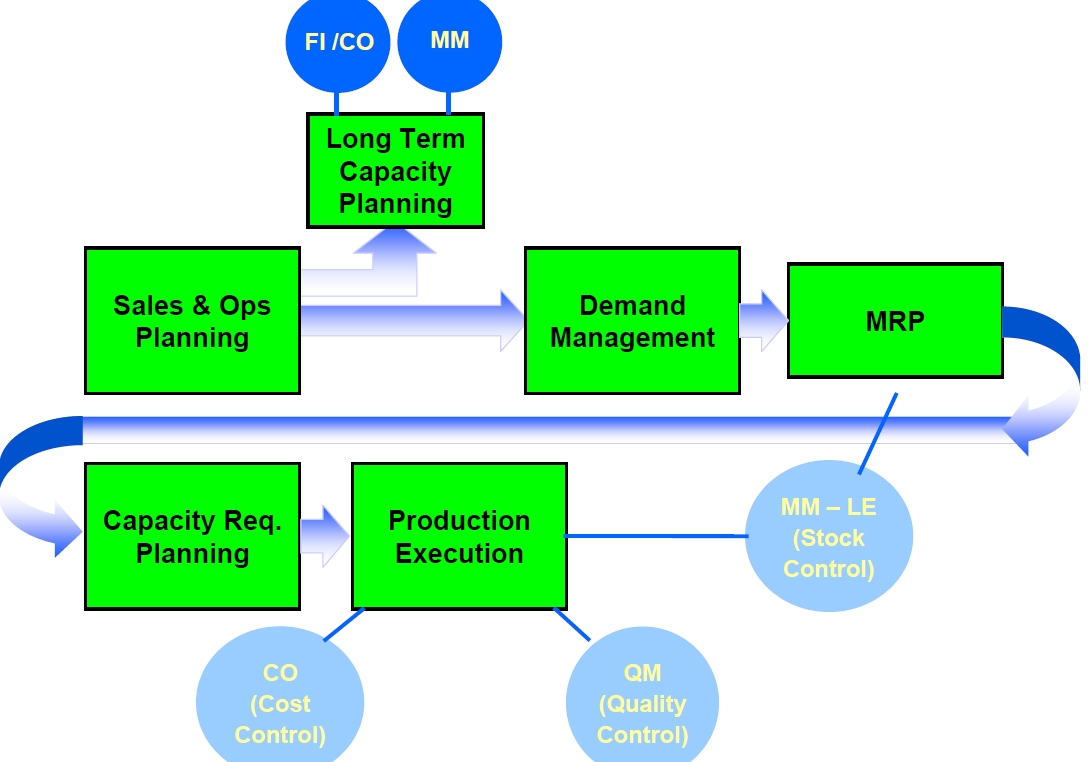
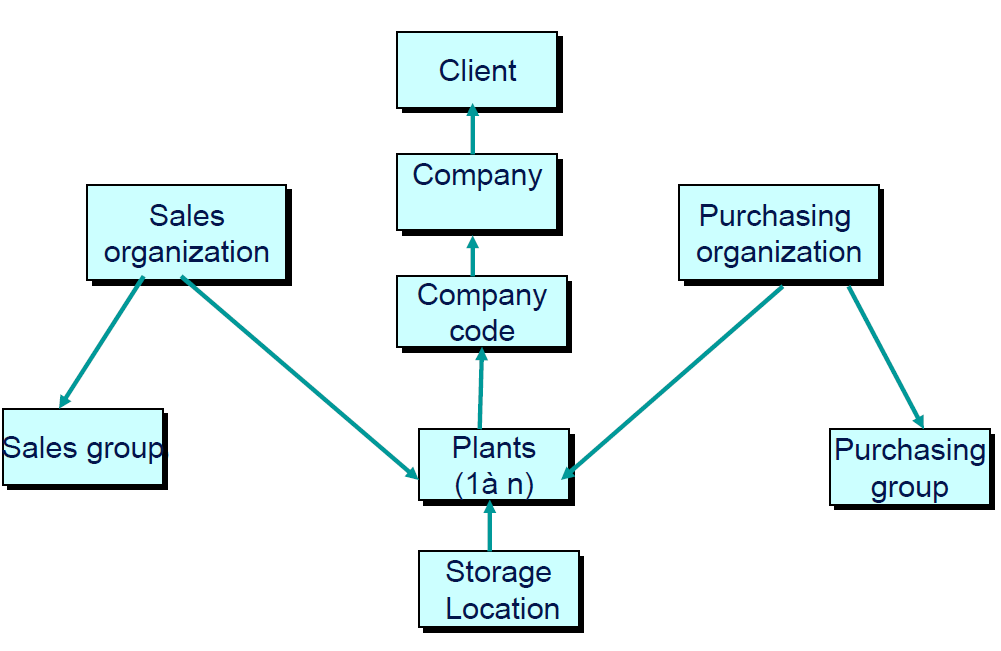
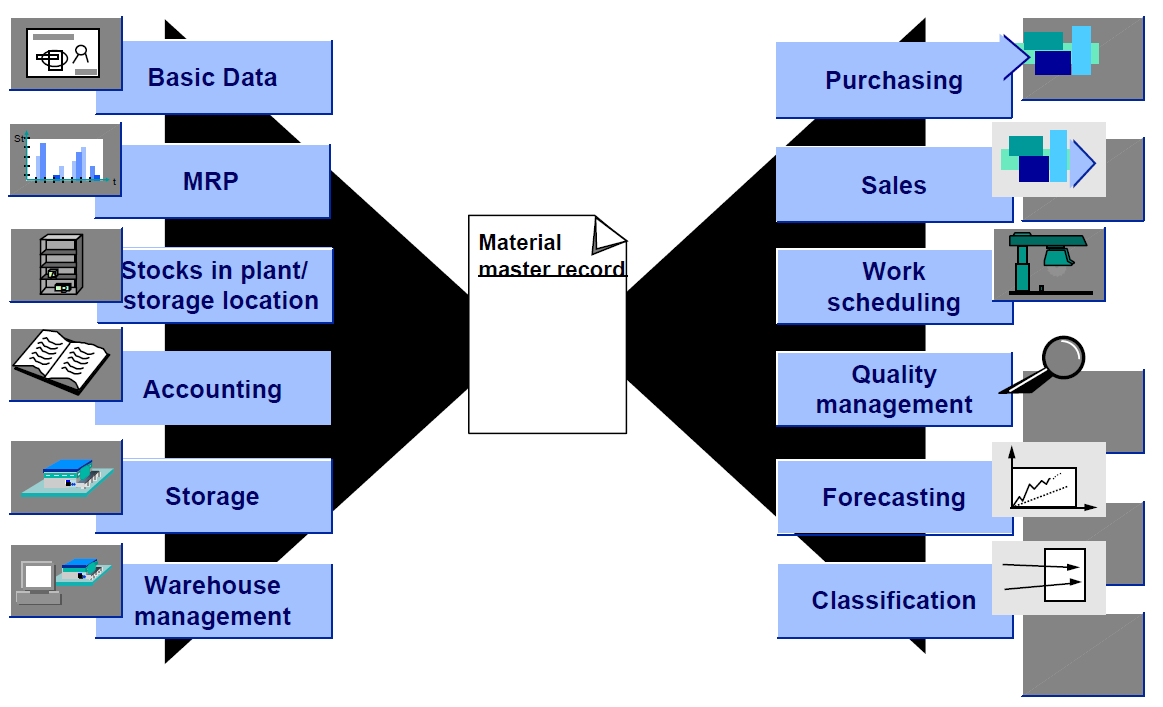
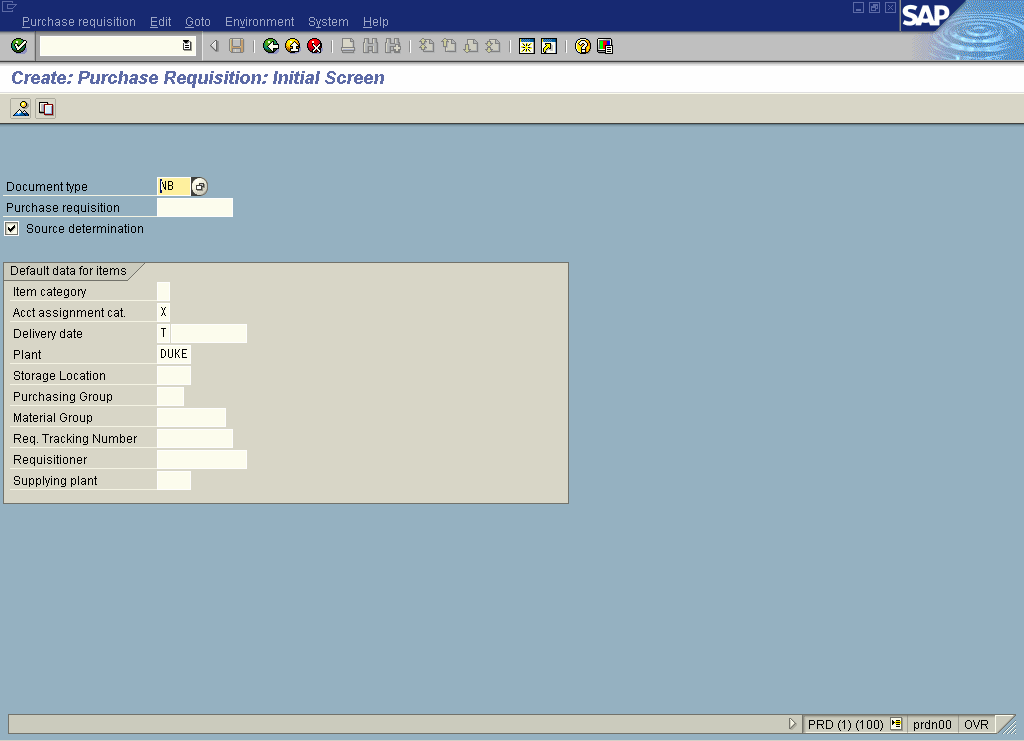
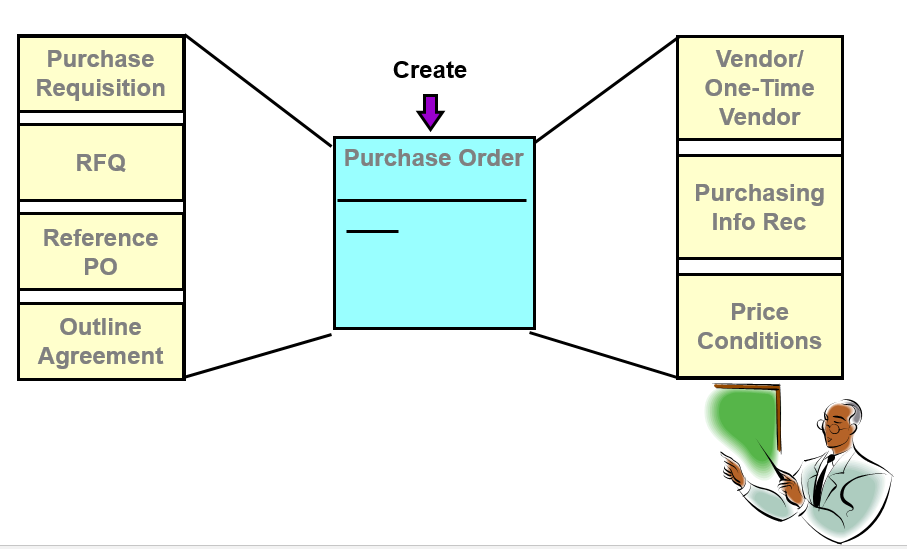
Leave a Reply